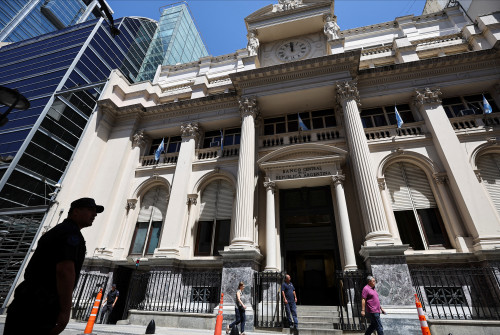By Elizabeth Howcroft
LONDON (Reuters) -Top cryptocurrency bitcoin could reach $100,000 by the end of 2024, Standard Chartered said on Monday, saying that the so-called “crypto winter” is over.
Bitcoin could gain from factors including recent turmoil in the banking sector, a stabilisation of risk assets as the U.S. Federal Reserve ends its interest rate-hiking cycle and improved profitability of crypto mining, Standard Chartered’s head of digital assets research Geoff Kendrick said in a note.
“While sources of uncertainty remain, we think the pathway to the USD 100,000 level is becoming clearer,” Kendrick wrote.
Bitcoin has rallied so far this year, rising above $30,000 in April for the first time in ten months. Its gains represent a partial recovery after trillions of dollars were wiped from the crypto sector in 2022, as central banks hiked rates and a string of crypto firms imploded.
Predictions of sky-high valuations have been commonplace during bitcoin’s past rallies. A Citi analyst said in November 2020 that bitcoin could climb as high as $318,000 by the end of 2022. It closed last year down about 65% at $16,500.
In Monday’s note, Standard Chartered said that bitcoin has benefited from its status as a “branded safe haven, a perceived relative store of value and a means of remittance.”
Kendrick said the European Parliament’s backing of the European Union’s first set of rules to regulate crypto asset markets “should provide a tailwind” for bitcoin.
JPMorgan said in a note on April 5 that a technical change to the bitcoin blockchain in April 2024, known as its “halving”, could boost its price by making it more expensive to produce, causing a “positive psychological effect”.
JPMorgan said that cryptocurrency prices have already benefited from crypto enthusiasts interpreting the recent U.S. banking crisis as a “vindication of the crypto ecosystem”. Crypto supporters say stablecoins are “less susceptible to runs”, JPMorgan said.
U.S. regulators have previously told banks to be alert for liquidity risks coming from crypto-related deposits, such as stablecoin reserves, which could be subject to rapid outflows.
(Reporting by Elizabeth Howcroft; editing by Tom Wilson, Louise Heavens and Jonathan Oatis)





